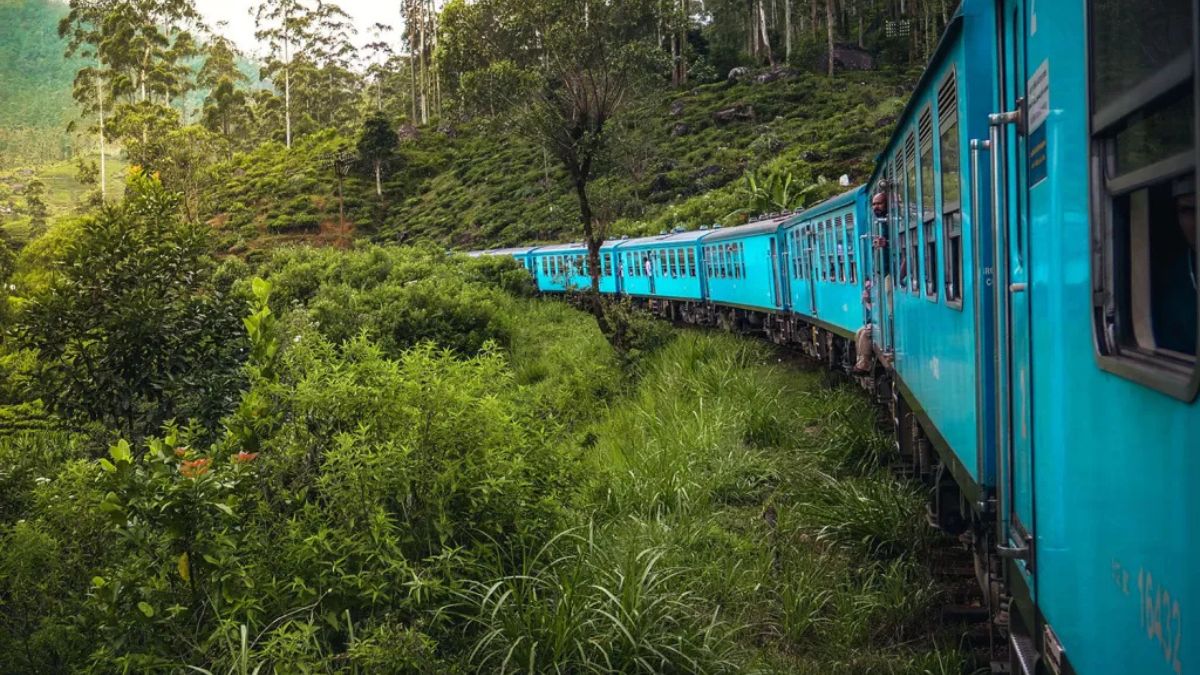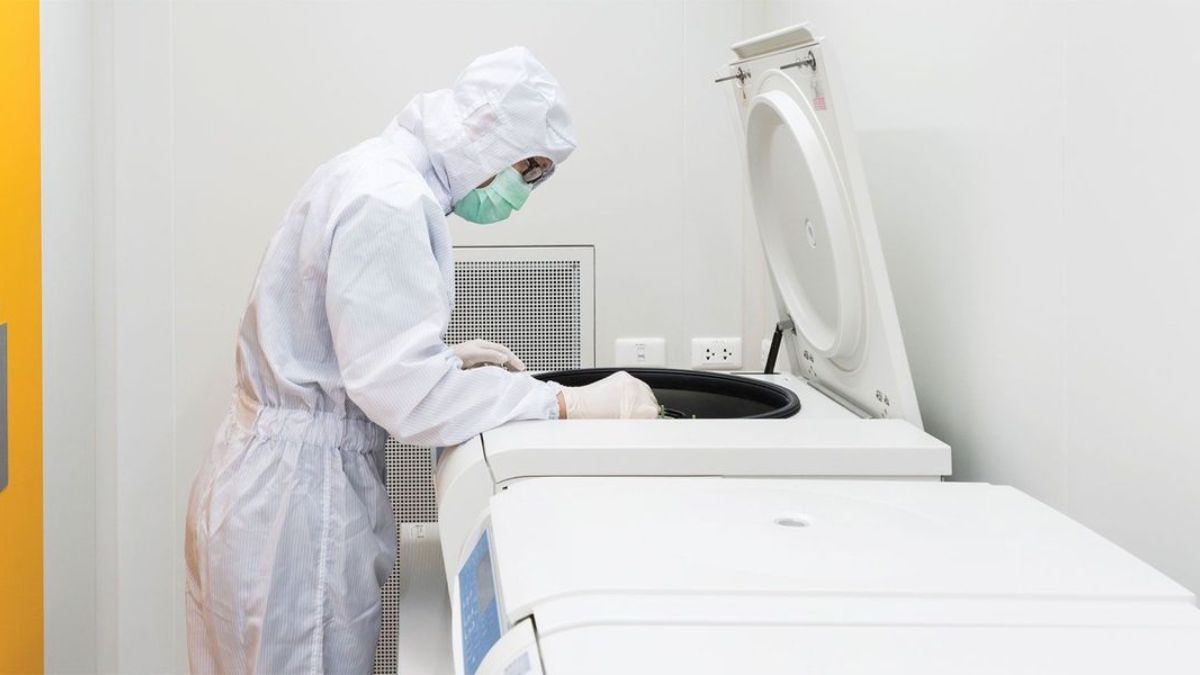TOPIC
10 Days in Sri Lanka Itinerary: A Perfect for Nature and Culture Lovers

Sri Lanka, often referred to as the “Pearl of the Indian Ocean,” is a treasure trove of natural beauty and rich cultural heritage. With its stunning landscapes, ancient cities, and vibrant traditions, this island nation offers an unforgettable experience for travelers seeking adventure and insight. Whether you’re wandering through lush tea plantations or marveling at breathtaking rock fortresses, every corner reveals a story waiting to be discovered.
Planning your journey can feel overwhelming with so much to explore. That’s why we’ve crafted a 10-day Sri Lanka itinerary specifically designed for nature lovers and culture enthusiasts alike. From bustling city streets filled with local flavors to serene hilltops overlooking rolling hills, each day promises unique experiences that will leave you enchanted by this beautiful land.
So pack your bags! Your incredible Sri Lankan adventure awaits just around the corner.
Day 1: Arriving in Colombo
Colombo, the vibrant capital of Sri Lanka, welcomes you with open arms. As soon as you arrive, the energy is palpable. The blend of old-world charm and modernity is captivating.
Start your day by wandering through the city’s colonial heritage. Visit landmarks like the Old Parliament Building and Fort district that echo stories from a bygone era. Each street corner reveals a piece of history waiting to be discovered.
Don’t miss out on local street food! Savor kottu roti or hoppers from bustling stalls. The flavors are bold and authentic—an experience that dances on your taste buds.
As evening approaches, stroll along Galle Face Green where locals gather to enjoy sunset views over the Indian Ocean. It’s an ideal spot to unwind after a long journey while soaking in Sri Lanka’s lively atmosphere.
– Exploring the city’s colonial heritage
Colombo, the vibrant capital of Sri Lanka, is a tapestry woven with colonial history. As you stroll through its streets, remnants of British, Portuguese, and Dutch architecture greet you at every corner.
The iconic Galle Face Green invites visitors to unwind against the backdrop of an azure ocean while enjoying colonial-era buildings like the Old Parliament and the majestic Lighthouse at Point de Galle. Each structure tells a story of bygone eras.
Wander into Fort Colombo for striking examples of Victorian design juxtaposed with modern skyscrapers. The contrast highlights how this city embraces its past while forging ahead into contemporary life.
Don’t miss visiting the National Museum; it’s packed with artifacts that date back centuries. This cultural gem provides deeper insights into Sri Lankan heritage influenced by colonization.
Exploring these sites unravels layers of history that shape today’s Colombo, making each step feel like a journey back in time.
– Trying local street food
Sri Lanka’s street food scene is a vibrant tapestry of flavors. As you wander through Colombo, your senses will be awakened by the enticing aromas wafting from roadside stalls.
Begin with kottu roti, a stir-fried dish made with chopped flatbread, vegetables, and spices. The sound of blades hitting the hot griddle creates an energetic rhythm that draws crowds.
Don’t miss out on hoppers—thin pancakes made from fermented rice flour. They’re often served with a runny egg in the center or sweetened coconut milk for breakfast.
For something spicy, try samosas filled with potatoes and lentils. These crispy delights pack a punch and are perfect for snacking while exploring.
Wash it all down with king coconut water; its refreshing taste is both hydrating and delicious after wandering under the sun. Each bite tells a story rich in tradition and culture.
Day 2: Sigiriya
Day 2 in Sri Lanka takes you to the breathtaking Sigiriya. Known for its towering rock fortress, Sigiriya is a UNESCO World Heritage site that offers stunning views and rich history.
Start your day early to beat the heat as you ascend the 1,200 steps leading up to Lion’s Rock. The climb is rewarding; each step reveals ancient frescoes and mirror walls reflecting centuries of artistry. As you reach the summit, be prepared for panoramic vistas that will take your breath away.
After soaking in the sights from above, head over to Polonnaruwa. This ancient city boasts impressive ruins such as temples and stupas dating back to the 12th century. Walking among these remnants transports you back in time, offering a glimpse into Sri Lanka’s storied past.
The combination of natural beauty and cultural heritage makes this day truly unforgettable.
– Climbing the iconic rock fortress
Standing tall at 200 meters, Sigiriya Rock Fortress is a mesmerizing sight. This UNESCO World Heritage site captures the imagination of all who visit. The ancient ruins perched on top offer breathtaking views of the lush landscape below.
The climb to the summit requires some effort but rewards you with an extraordinary panorama. As you ascend, you’ll encounter fascinating frescoes and mirror walls that speak volumes about Sri Lanka’s rich history.
Each step reveals snippets of stories from centuries past. Take your time to absorb every detail as you navigate narrow staircases and steep paths.
Reaching the top feels like stepping into another world. The remnants of King Kashyapa’s palace greet you, leaving visitors in awe of human ingenuity against nature’s backdrop. Here, amidst history and stunning vistas, it’s impossible not to feel connected to both culture and earth itself.
– Visiting the ancient city of Polonnaruwa
Visiting the ancient city of Polonnaruwa is like stepping into a living history book. This UNESCO World Heritage site boasts remarkable ruins that reflect Sri Lanka’s rich past.
As you wander through its expansive grounds, you’ll encounter stunning structures such as the Royal Palace and Gal Vihara. The intricate carvings on these ancient stones tell stories of a civilization that flourished over 1,000 years ago.
Don’t miss the massive statue of Buddha carved straight from granite. Its serene expression captivates visitors and invites moments of reflection.
The lush greenery surrounding the ruins adds to the atmosphere, creating an enchanting backdrop for exploration. You might even spot local wildlife roaming freely among the remnants of this bygone era.
Polonnaruwa offers not just sights but also a deep connection to Sri Lankan heritage. Each step taken here brings you closer to understanding this island’s storied past and vibrant culture.
Day 3: Kandy
Kandy, a city steeped in history and culture, is an essential stop on your Sri Lanka itinerary. The centerpiece of Kandy is the Temple of the Tooth Relic, home to what many believe is a sacred relic of Buddha himself. A visit here offers not just spiritual insights but also breathtaking architecture.
After soaking up the spirituality, head to a nearby tea plantation. The lush green hills are mesmerizing. Here, you can witness the intricate process of tea production from leaf picking to brewing.
Engage with friendly locals who share fascinating stories about their daily lives in this vibrant community. Don’t forget to savor some freshly brewed Ceylon tea; it’s an experience that lingers long after you leave.
– Exploring the Temple of the Tooth Relic
The Temple of the Tooth Relic, or Sri Dalada Maligawa, is a must-visit site in Kandy. This sacred destination houses what Buddhists believe to be a tooth of Lord Buddha himself. The atmosphere here is serene and spiritual.
As you approach the temple, intricate architecture catches your eye. Beautiful carvings and golden embellishments tell tales of history and devotion. Inside, devotees offer prayers and lotus flowers while chanting softly—a truly moving experience.
Don’t miss the chance to witness the daily rituals that take place at noon. The sound of drums fills the air as offerings are made with great reverence.
Wandering through this hallowed space offers a glimpse into Sri Lanka’s rich cultural heritage. Each corner reveals stories etched in time—inviting visitors to reflect on faith and tradition while soaking in breathtaking surroundings.
– Visiting a tea plantation and factory
Visiting a tea plantation and factory in Kandy is like stepping into a vibrant green dream. The rolling hills, covered in lush tea bushes, create an enchanting landscape that seems almost surreal.
As you stroll through the rows of neatly trimmed plants, you’ll meet friendly local workers expertly plucking leaves. Their skill reveals the passion behind each cup of Ceylon tea.
The aroma intensifies as you enter the factory. Here, traditional methods blend with modern techniques to produce some of the finest teas in the world. Watch as fresh leaves are dried and processed before your eyes.
Don’t miss out on sampling different varieties straight from the source. Each sip tells a story of its origin—the unique flavors shaped by soil, climate, and careful cultivation.
This experience not only immerses you in Sri Lanka’s rich culture but also highlights its significance as one of the leading producers of tea globally.
Day 4: Ella
Day four takes you to the enchanting hills of Ella. This small town, surrounded by lush greenery and tea plantations, is a haven for nature lovers.
Start your day with a hike up Little Adam’s Peak. The trail is relatively easy and rewards you with breathtaking views over the valleys below. Keep your camera ready; every angle offers something unique.
Next, visit the Nine Arches Bridge, an architectural marvel set against vibrant landscapes. Snap some pictures as trains rumble across this iconic structure—it’s truly a sight to behold.
In the afternoon, wander through local tea estates. Here, you’ll learn about Sri Lanka’s famous Ceylon tea production process while sipping on fresh brews that delight the senses.
As dusk approaches, find a cozy café where you can unwind and soak in Ella’s tranquil atmosphere before heading back to rest for another adventure ahead.
Conclusion : Sri Lanka Itinerary
This 10-day Sri Lanka itinerary offers a perfect blend of nature and culture. Each destination reveals a unique aspect of the island’s rich heritage and stunning landscapes. From Colombo’s bustling streets to the breathtaking views from Ella, every stop invites exploration.
As you journey through this beautiful country, immerse yourself in its traditions, savor local cuisine, and connect with warm-hearted locals. Whether you are climbing Sigiriya Rock or sipping tea in Kandy, each experience leaves lasting memories.
Embrace the vibrant colors, sounds, and flavors of Sri Lanka as you travel through its diverse regions. This itinerary not only showcases iconic landmarks but also encourages moments of reflection amidst nature’s beauty. Prepare for an adventure that nourishes both your soul and your sense of wonder!
TOPIC
The Power of Prevention: A Holistic Approach to Pest Management

Understanding Different Pest Control Methods
Achieving a pest-free home is vital for both hygiene and peace of mind. Understanding the various methods available when considering pest control solutions can significantly influence the results. Natural pest control methods include biological pest control, which introduces natural predators to the environment to reduce the pest population, and mechanical pest control, such as traps and barriers, which physically intercept pests. These methods are favored for their minimal environmental impact and safety around pets and children.
Conversely, chemical control methods involve pesticides and insecticides that can immediately relieve pest infestations. However, it’s essential to use these products judiciously, following manufacturer guidelines closely to prevent harm to non-target species, your family, or beneficial insects that contribute to your garden’s health. For those seeking a more thorough approach, considering a permanent pest control solution Houston TX can be an effective strategy, offering customized plans to sustain a pest-free environment in alignment with regional challenges.
Proactive Steps to Prevent Pest Infestations
Prevention should always be the first line of defense against pests. Outfitting your home with pest prevention measures involves routine activities and vigilant maintenance. Regular sweeping and vacuuming help remove food particles and potential nesting materials that attract pests. Sealing cracks and crevices with caulk is essential to block uninvited guests from sneaking inside.
Another simple yet impactful step is to ensure rubbish bins are tightly sealed and emptied regularly, while composts should be managed far from the home’s perimeter to minimize pest attraction. Limiting water sources by fixing leaky pipes and avoiding overwatering plants can deter pests like mosquitoes and cockroaches, which thrive in moist conditions. By instilling these everyday practices, homeowners can significantly prevent common pests and reduce the need for drastic measures later.
Expert-Recommended Practices for Lasting Results
Integrating professional advice into your pest management strategy can lead to long-lasting results. Integrated Pest Management (IPM) is a holistic approach that combines various pest control techniques and is tailor-fitted to identified pest issues. This strategy relies on a deep understanding of pest life cycles and their interactions with the environment, which specialists can provide because of their extensive study and practical expertise.
According to data from the Environmental Protection Agency, IPM is effective because it combines sanitation, habitat alteration, and targeted use of pest control products only where necessary. By leveraging expert advice through IPM, you can achieve a healthier home environment that deters pests effectively without over-reliance on chemical treatments.
Fostering a Healthy Ecosystem Around Your Home
Encouraging a balanced ecosystem around your home can be a powerful, natural pest deterrent. Practices such as planting native flora attract beneficial insects and birds that prey on pest species. Creating a supportive habitat for these creatures empowers nature’s pest controllers to thrive and contribute to a naturally balanced garden or yard.
Birds and predator insects, such as ladybugs and lacewings, can substantially minimize pest populations without chemical measures. Additionally, maintaining diverse plant life can discourage monocultures that pests target. Native plants often host fewer pests and withstand local climate conditions better, sustaining their growth with minimal human intervention.
TOPIC
Comprehensive Guide to Cleanroom Certification and Testing

Cleanroom certification and testing ensure controlled environments meet stringent air quality, particle count, and safety standards. The process includes airflow analysis, HEPA filter integrity tests, and environmental monitoring. Regular certification complies with industry regulations, ensuring optimal conditions for sensitive pharmaceuticals, electronics, and biotechnology processes.
What Is Cleanroom Certification?
Cleanroom certification is a rigorous process that ensures controlled environments, or cleanrooms, meet strict standards and regulations for air quality, particle count, and other environmental conditions crucial for industries like pharmaceuticals, electronics, and biotechnology.
Achieving cleanroom certification CA guarantees that facilities operate within internationally recognized standards, which is crucial in minimizing risks associated with contamination. The process involves extensive testing and evaluation to ensure the cleanroom environment meets these standards. This certification is essential for preserving the integrity and caliber of goods produced in these settings and guaranteeing that they are free of impurities that might jeopardize their usability or safety.
The Importance of Cleanroom Certification
Cleanroom certification ensures product quality, regulatory compliance, and personnel health and safety. It reduces contamination, especially in sensitive industries like pharmaceuticals and biotechnology. The CDC guidelines emphasize the importance of maintaining a sterile environment for patient safety in healthcare settings. Regular audits and certifications ensure facilities are regularly reviewed and updated to meet standards. This not only maintains product integrity but also enhances operational efficiency. The process maintains product integrity and elevates an organization’s reputation as a reliable and quality-conscious entity.
Standard Tests in Cleanroom Certification
Airborne Particle Counts and HEPA Filter Integrity Testing are crucial for maintaining cleanroom cleanliness. Airborne Particle Counts measure the number and size of particles in the air, ensuring the cleanroom meets the required cleanliness level. HEPA Filter Integrity Testing verifies the functioning of HEPA filters, ensuring they effectively remove contaminants. Airflow and Segregation Tests ensure airflow patterns are designed to prevent cross-contamination. Pressure Differential Monitoring maintains the correct pressure differential between cleanroom zones, preventing contamination inflow from less clean areas. Temperature and Humidity Control tests ensure the cleanroom’s environmental conditions are within specified ranges, ensuring product quality and personnel comfort. Regularly performing these tests helps maintain the cleanroom’s integrity and compliance with relevant standards.
Steps to Obtain Cleanroom Certification
Obtaining cleanroom certification involves a thorough review of existing conditions, preparation of necessary documentation and standard operating procedures (SOPs), testing, review, and audit by an independent auditor, and certification by an accredited body. The initial assessment phase identifies gaps and areas for improvement, while the documentation phase outlines protocols for maintaining the cleanroom environment in line with industry standards. Regular audits and reviews help address gaps, ensuring continuous improvement and compliance. The certification phase confirms that the cleanroom adheres to all necessary standards, providing confidence to the facility and its clients. This comprehensive approach ensures the cleanroom meets all the required standards and effectively performs under regulated conditions.
Best Practices in Maintaining Cleanrooms
Maintaining a certified cleanroom requires strict protocols, including regular cleaning schedules, proper gowning, routine equipment checks, and continuous monitoring of environmental conditions. These practices ensure the removal of contaminants, minimize contamination introduction, and ensure critical systems like air filtration are correctly functioning. Staying updated with CDC guidelines helps maintain sterility and reduce contamination risks. Fostering a disciplined culture among personnel is crucial, and regular training on cleanroom protocols is essential. Routine inspections and surprise audits encourage strict adherence to procedures, ensuring cleanrooms operate at high levels of cleanliness and efficiency.
Frequently Asked Questions
Here are some common questions about cleanroom certification and testing:
- Q: How often should cleanroom certification be renewed?
- A: Typically, cleanroom certification must be renewed annually or as regulatory bodies specify. Regular renewal ensures that the cleanroom continues to meet evolving standards and remains in compliance with industry regulations.
- Q: What industries require cleanroom certification?
- A: Industries such as pharmaceuticals, healthcare, electronics manufacturing, and biotechnology commonly require cleanroom certification due to the high sensitivity and precision required in their operations.
- Q: Can cleanroom standards vary by region?
- A: Yes, cleanroom standards can vary by country and industry regulations. Organizations must stay informed about regional standards and ensure their cleanrooms adhere to local and international laws.
Expert Tips for Cleanroom Management
Experts suggest that maintaining optimal cleanroom performance involves the following:
- Continuous staff training.
- We are using advanced monitoring systems to track environmental parameters.
- We are establishing a robust preventative maintenance schedule.
Engaging third-party auditors can provide valuable insights and recommendations for improvement, identifying areas that may have been overlooked internally. These audits can help organizations achieve higher certification and operational excellence levels, ensuring their cleanrooms remain efficient and compliant. By following these expert tips, organizations can achieve higher certification and operational excellence levels, ensuring their cleanrooms stay efficient and compliant.
Final Thoughts
Cleanroom certification is crucial for maintaining high standards in various industries. It entails thorough testing and assessment to ensure cleanrooms fulfill the requirements and improve product quality and safety. Resources like the CDC Guidelines on Environmental Infection Control offer valuable insights into maintaining sterile and controlled environments, ensuring the safety and quality of cleanroom environments.
TOPIC
Ensuring Safety on the Job Site: Essential Guidelines for Heavy Equipment Operators

Introduction to Job Site Safety
Job site safety is paramount in the construction industry. In addition to protecting workers, maintaining a secure workplace encourages effectiveness and productivity. One key aspect of job site safety is the appropriate use of alturnamats to prevent accidents and provide stability for heavy machinery. Handling heavy equipment demands more than just skill; it requires a reliable safety foundation.
The National Safety Council states that the construction sector is responsible for a significant number of workplace injuries, leading to thousands of incidents annually. Investing in quality equipment mats, such as alturnamats, can significantly reduce these incidents, providing a safer environment for all personnel.
Choosing the Right Equipment Mats
Selecting the suitable equipment mats is crucial for maintaining a safe work environment. A few things to think about are the weight of the equipment, ground conditions, and the type of material the mats are made of. Each of these elements plays a role in ensuring stability and safety.
Weight Capacity
Different mats have varying weight capacities. It’s essential to identify mats that can support the weight of the heavy machinery being used. Overloading a mat can result in breakage or shifting, leading to accidents. For instance, a mat that can support up to 50 tons may be required for large cranes, while lighter machinery, such as forklifts, may require mats with lower weight capacities. Ensuring compatibility between equipment and mats is crucial to avoid unexpected mishaps.
Ground Conditions
Consider the type of terrain where the mats will be used. For example, muddy or sandy areas might require mats with better traction and drainage capabilities. Mats designed for rough terrains provide enhanced grip and prevent machinery from sinking. Selecting the appropriate mat for specific ground conditions ensures that the equipment remains stable and operational, even in challenging environments.
Material Type
Materials such as high-density polyethylene (HDPE) are preferred for their durability and resistance to chemicals and extreme weather. Choosing the suitable material ensures longevity and effectiveness in diverse conditions. HDPE mats are known for their flexibility and sturdiness, making them ideal for various industrial applications. Additionally, some mats incorporate additives to enhance their resistance to ultraviolet (UV) rays, further extending their lifespan in outdoor settings.
Securing Mats
Secure mats with appropriate fastening tools. Depending on the mat design, this might include using stakes or specialized connectors. Securing methods help maintain the mats’ position, preventing them from shifting under the weight of heavy equipment. Consistent monitoring ensures that the mats remain anchored adequately throughout the project.
Ensuring Employee Safety
Employees should be trained on the proper use and maintenance of equipment mats. Comprehensive training programs can include demonstrations of correct installation techniques and information on recognizing potential hazards. Safety drills and continuous education keep employees vigilant and prepared.
Safety Drills
Periodic safety drills help reinforce the importance of proper mat usage and prepare employees for emergencies. Regular drills foster a culture of safety and readiness, enabling workers to respond effectively to potential hazards.
Adapting to Weather Conditions
Weather conditions can significantly impact equipment mat efficacy. In rainy or icy conditions, mats might become slippery, requiring additional precautions. Using mats with textured surfaces can help improve traction. Always consider the weather forecast when planning job site activities.
-

 TOPIC3 months ago
TOPIC3 months agoExploring Fappelo: The Rise of a Unique Online Community
-

 TECHNOLOGY3 months ago
TECHNOLOGY3 months agoExploring the Impact of Shannon Swanick TPO on Modern Blogging
-

 CRYPTO5 months ago
CRYPTO5 months agoUnderstanding the Landscape of Crypto30x.com regulation: What You Need to Know
-

 CRYPTO5 months ago
CRYPTO5 months agoExploring the Benefits of Using Biitland.com Stablecoins
-

 TOPIC3 months ago
TOPIC3 months agoTop 5 Myths About Hypackel Debunked!
-

 HEALTH2 months ago
HEALTH2 months agoTop 5 Benefits of Using a Mansrufer for Your Daily Routine
-

 BEAUTY5 months ago
BEAUTY5 months agoCeylan Eye Cream Reviews: Transforming Tired Eyes or Just Hype?
-

 TOPIC2 months ago
TOPIC2 months agoThe Art of Expression: Analyzing Puppygirlxd Most Iconic Creations
